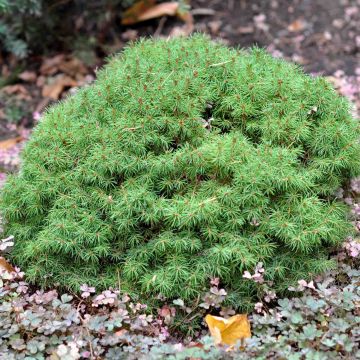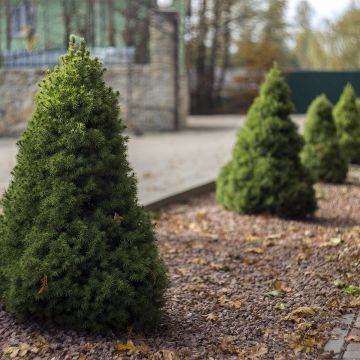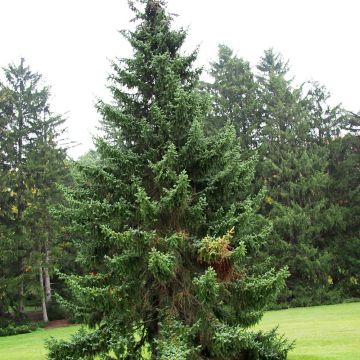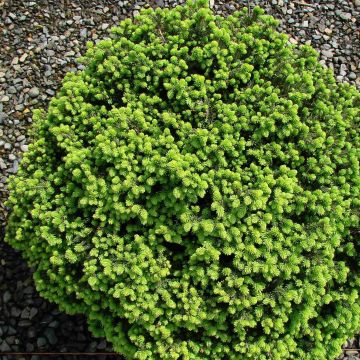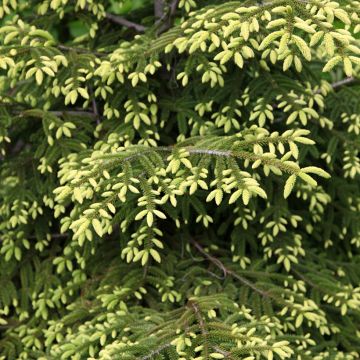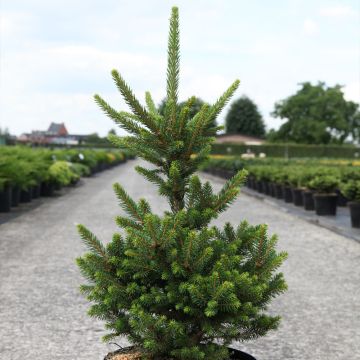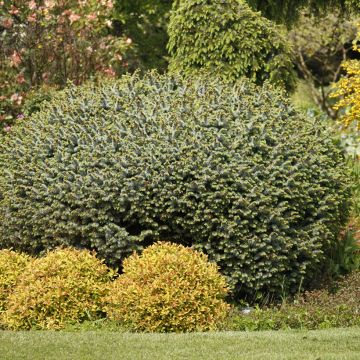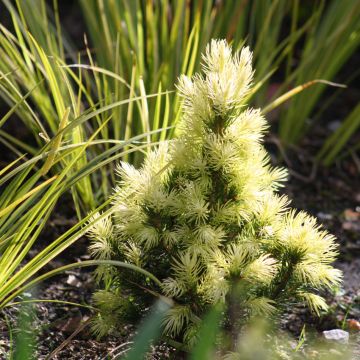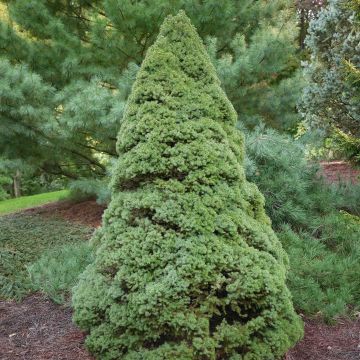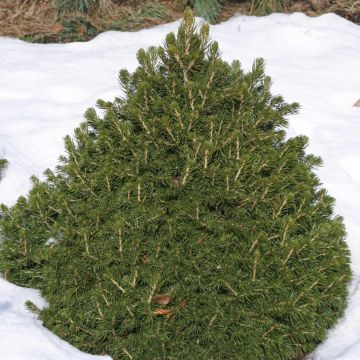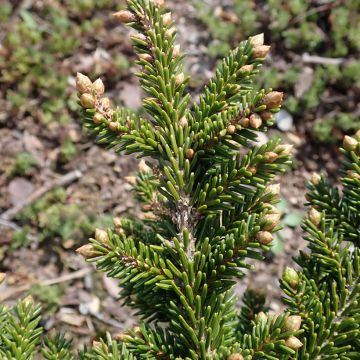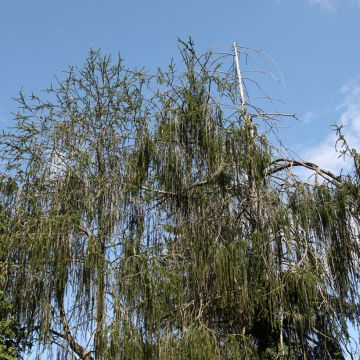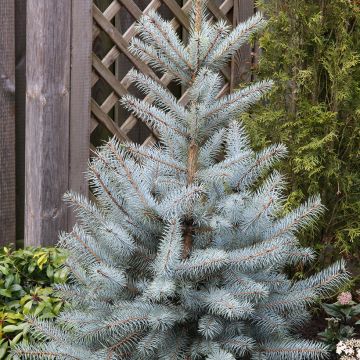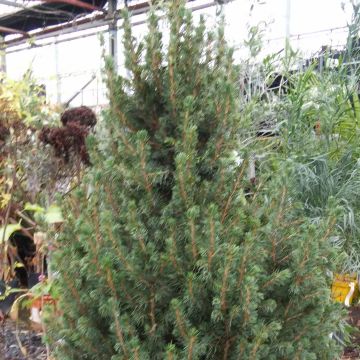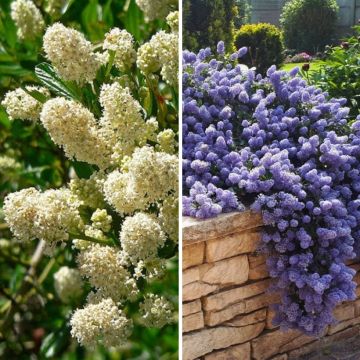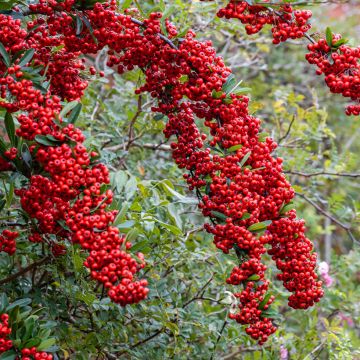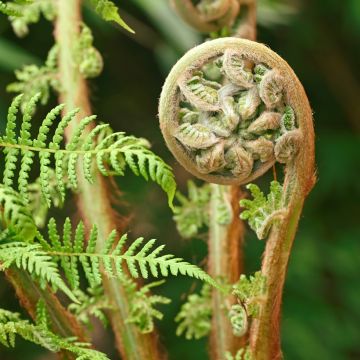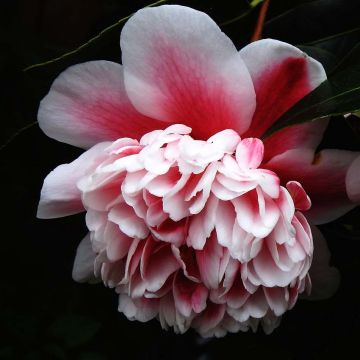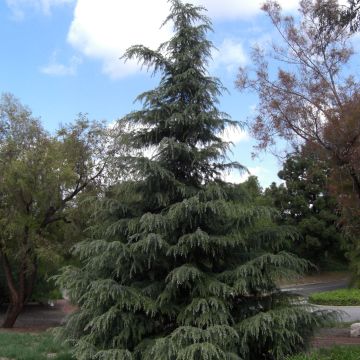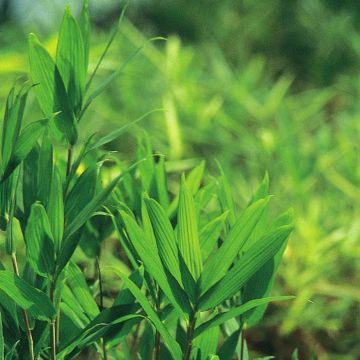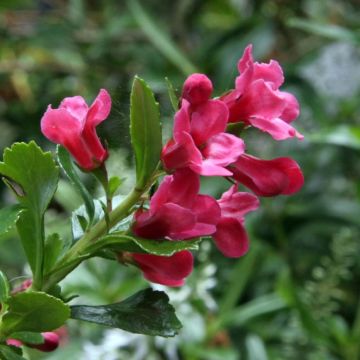

Picea breweriana - Epicéa de Brewer


Picea breweriana - Epicéa de Brewer
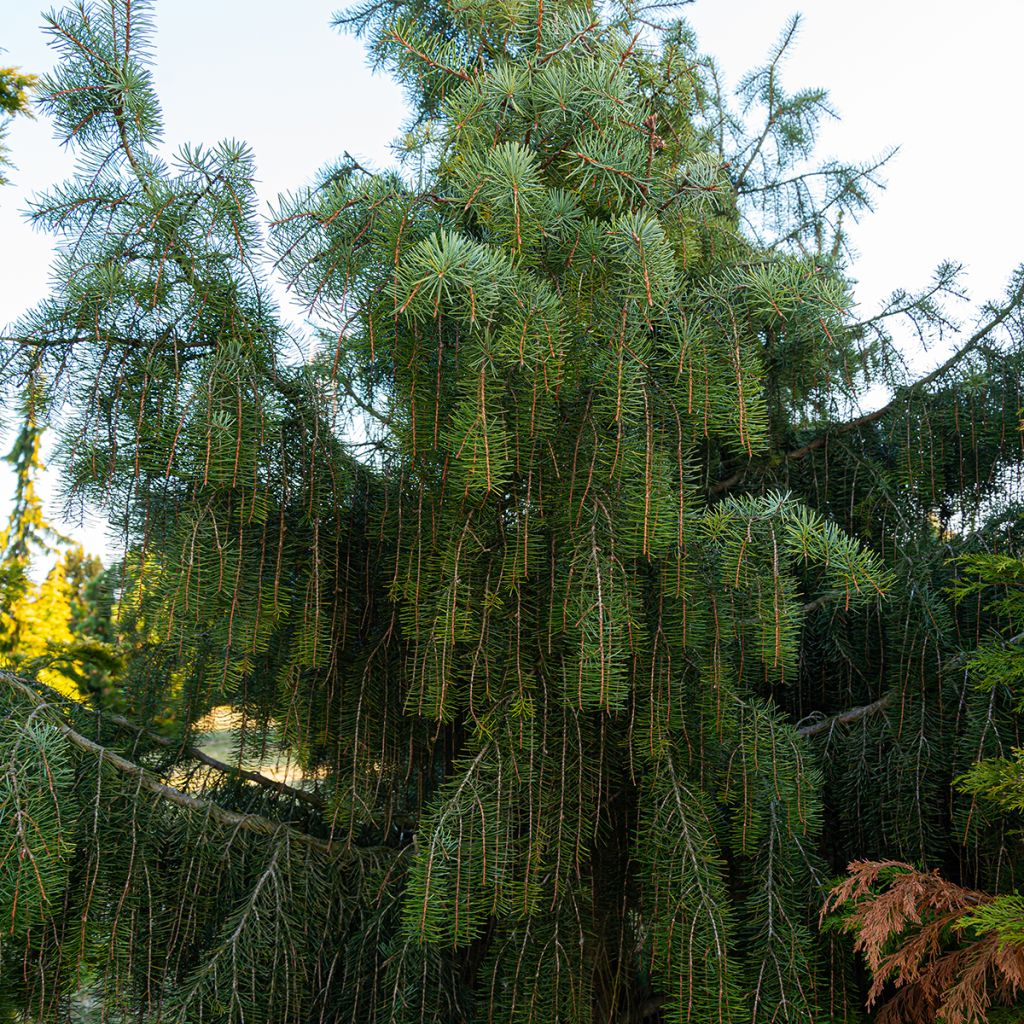

Picea breweriana - Epicéa de Brewer
Picea breweriana - Brewer's Spruce
Picea breweriana
Brewer's Spruce
Special offer!
Receive a €20 voucher for any order over €90 (excluding delivery costs, credit notes, and plastic-free options)!
1- Add your favorite plants to your cart.
2- Once you have reached €90, confirm your order (you can even choose the delivery date!).
3- As soon as your order is shipped, you will receive an email containing your voucher code, valid for 3 months (90 days).
Your voucher is unique and can only be used once, for any order with a minimum value of €20, excluding delivery costs.
Can be combined with other current offers, non-divisible and non-refundable.
Why not try an alternative variety in stock?
View all →This plant carries a 24 months recovery warranty
More information
We guarantee the quality of our plants for a full growing cycle, and will replace at our expense any plant that fails to recover under normal climatic and planting conditions.
Would this plant suit my garden?
Set up your Plantfit profile →
Description
Picea breweriana, the Brewer's Spruce, also known as the Weeping Spruce of Oregon, is a beautiful conifer native to the western part of North America, which has become rare in its original habitat. It is a medium to large-sized tree with a regular pyramidal habit and dark bluish-green foliage. Its main branches are pendulous in mature specimens, and its superb branching forms long cascading tresses. Slow-growing in its juvenile stage, this spruce becomes over time a beautiful specimen for ornamental purposes in parks and large gardens. It is very well adapted to mountainous areas and snow.
Brewer's Spruce grows naturally on dry, rocky slopes in the Siskiyou Mountains of southwestern Oregon and northwestern California, between 1000 and 2500 metres (3281 and 8202 feet) altitude, snow-covered in winter. It can be found on a wide range of soils (acidic to alkaline), but always well-drained. This species, which is becoming increasingly rare, is listed on the IUCN Red List (International Union for Conservation of Nature). It is a hardy evergreen conifer belonging to the pine family. In its natural environment, it grows slowly, with an elegant and regular conical habit, and its main branches are initially horizontal before gracefully drooping in older specimens. This tree can reach heights of 20 to 40 metres (66 to 131 feet) in the wild, but does not exceed 15 metres (49 feet) in height and 5-6 metres (16-20 feet) in width when cultivated. Its growth rate is around 20 to 30 centimetres (8 to 12 inches) per year. Its trunk is covered with bark that becomes greyish-purple and scaly over time. Its needles, radiating around the orangish-brown branches, measure 2 to 2.5 centimetres (1 inches) in length. They are shiny dark green on the upper side, while their flattened underside has 5 to 6 whitish bands. The foliage consists of a few tiered main branches, with long weeping branches that can reach 2 metres (7 feet) in length and hang down in thick fringes. This beautiful weeping foliage only appears when the spruce reaches a height of 1.5 to 2 metres (5 to 7 feet), which is an average age of 15 years. Mature specimens bear cylindrical cones measuring 8 to 10 centimetres (3 to 4 inches) in length and 2 to 3 centimetres (1 inches) in diameter.
Due to its elegant habit and presence, the Weeping Spruce of Oregon is ideal for landscaping large areas. It prefers mountainous climates, slightly humid atmospheres, and is sensitive to hot summers. This tree should be planted as a specimen. It pairs well with large stones, geometric lines, and masonry structures. The distinctive visual qualities of conifers naturally stand out in contemporary gardens or French-style parks. These perennial plants provide long-lasting structure to the garden, creating a sense of permanence. They can be combined with heathers or ground cover plants such as Caucasian Alchemilla or Bergenias, for example. Also consider planting small spring bulbs such as snowdrops or daffodils at its base.
Report an error about the product description
Plant habit
Foliage
Botanical data
Picea
breweriana
Pinaceae
Brewer's Spruce
North America
Other Picea
View all →Planting and care
Picea breweriana prefers montane or oceanic climates: it tolerates snow well, likes moist soils in spring, but can withstand some summer drought. However, it fears heatwaves and excessively dry atmospheres. It should be planted from September to November and from February to May in well-drained soil. Choose a sunny spot. Stake the young plants. Soak the root balls well before planting. Add organic amendment during planting and water generously in the first years, and during prolonged droughts. Apply a special conifer fertilizer every year in April and weed the soil in summer. This extremely hardy conifer, however, fears heavy soils that are waterlogged in winter. Pruning is not necessary, on the contrary, as this plant expresses its full potential when allowed to grow freely.
Planting period
Intended location
Care
This item has not been reviewed yet - be the first to leave a review about it.
Similar products
Haven't found what you were looking for?
Hardiness is the lowest winter temperature a plant can endure without suffering serious damage or even dying. However, hardiness is affected by location (a sheltered area, such as a patio), protection (winter cover) and soil type (hardiness is improved by well-drained soil).

Photo Sharing Terms & Conditions
In order to encourage gardeners to interact and share their experiences, Promesse de fleurs offers various media enabling content to be uploaded onto its Site - in particular via the ‘Photo sharing’ module.
The User agrees to refrain from:
- Posting any content that is illegal, prejudicial, insulting, racist, inciteful to hatred, revisionist, contrary to public decency, that infringes on privacy or on the privacy rights of third parties, in particular the publicity rights of persons and goods, intellectual property rights, or the right to privacy.
- Submitting content on behalf of a third party;
- Impersonate the identity of a third party and/or publish any personal information about a third party;
In general, the User undertakes to refrain from any unethical behaviour.
All Content (in particular text, comments, files, images, photos, videos, creative works, etc.), which may be subject to property or intellectual property rights, image or other private rights, shall remain the property of the User, subject to the limited rights granted by the terms of the licence granted by Promesse de fleurs as stated below. Users are at liberty to publish or not to publish such Content on the Site, notably via the ‘Photo Sharing’ facility, and accept that this Content shall be made public and freely accessible, notably on the Internet.
Users further acknowledge, undertake to have ,and guarantee that they hold all necessary rights and permissions to publish such material on the Site, in particular with regard to the legislation in force pertaining to any privacy, property, intellectual property, image, or contractual rights, or rights of any other nature. By publishing such Content on the Site, Users acknowledge accepting full liability as publishers of the Content within the meaning of the law, and grant Promesse de fleurs, free of charge, an inclusive, worldwide licence for the said Content for the entire duration of its publication, including all reproduction, representation, up/downloading, displaying, performing, transmission, and storage rights.
Users also grant permission for their name to be linked to the Content and accept that this link may not always be made available.
By engaging in posting material, Users consent to their Content becoming automatically accessible on the Internet, in particular on other sites and/or blogs and/or web pages of the Promesse de fleurs site, including in particular social pages and the Promesse de fleurs catalogue.
Users may secure the removal of entrusted content free of charge by issuing a simple request via our contact form.
The flowering period indicated on our website applies to countries and regions located in USDA zone 8 (France, the United Kingdom, Ireland, the Netherlands, etc.)
It will vary according to where you live:
- In zones 9 to 10 (Italy, Spain, Greece, etc.), flowering will occur about 2 to 4 weeks earlier.
- In zones 6 to 7 (Germany, Poland, Slovenia, and lower mountainous regions), flowering will be delayed by 2 to 3 weeks.
- In zone 5 (Central Europe, Scandinavia), blooming will be delayed by 3 to 5 weeks.
In temperate climates, pruning of spring-flowering shrubs (forsythia, spireas, etc.) should be done just after flowering.
Pruning of summer-flowering shrubs (Indian Lilac, Perovskia, etc.) can be done in winter or spring.
In cold regions as well as with frost-sensitive plants, avoid pruning too early when severe frosts may still occur.
The planting period indicated on our website applies to countries and regions located in USDA zone 8 (France, United Kingdom, Ireland, Netherlands).
It will vary according to where you live:
- In Mediterranean zones (Marseille, Madrid, Milan, etc.), autumn and winter are the best planting periods.
- In continental zones (Strasbourg, Munich, Vienna, etc.), delay planting by 2 to 3 weeks in spring and bring it forward by 2 to 4 weeks in autumn.
- In mountainous regions (the Alps, Pyrenees, Carpathians, etc.), it is best to plant in late spring (May-June) or late summer (August-September).
The harvesting period indicated on our website applies to countries and regions in USDA zone 8 (France, England, Ireland, the Netherlands).
In colder areas (Scandinavia, Poland, Austria...) fruit and vegetable harvests are likely to be delayed by 3-4 weeks.
In warmer areas (Italy, Spain, Greece, etc.), harvesting will probably take place earlier, depending on weather conditions.
The sowing periods indicated on our website apply to countries and regions within USDA Zone 8 (France, UK, Ireland, Netherlands).
In colder areas (Scandinavia, Poland, Austria...), delay any outdoor sowing by 3-4 weeks, or sow under glass.
In warmer climes (Italy, Spain, Greece, etc.), bring outdoor sowing forward by a few weeks.






























